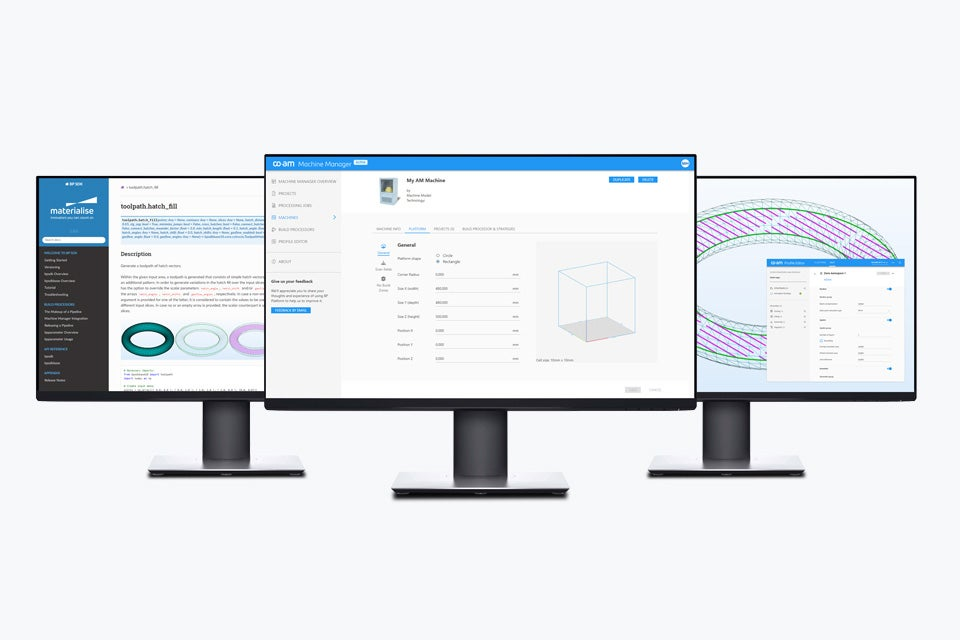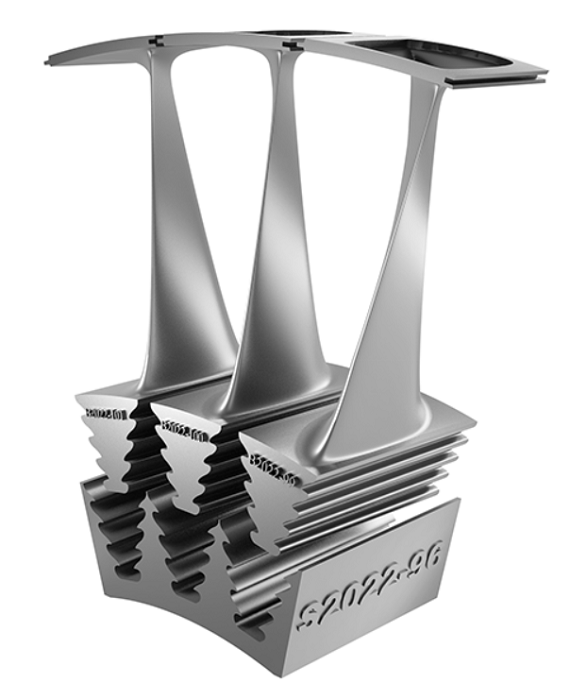At the 2023 RAPID + TCT event in Chicago, Materialise announced the latest release of its powerful data and build preparation Magics software. The manufacturing workflow is connected by the digital thread, and as such, traceability and connectivity are critically important. This new version, Magics 27, makes links with other software solutions a priority, so part status can be tracked from beginning to end. I spoke with Materialise CTO Bart Van der Schueren and Egwin Bovyn, Product Line Manager for Data and Build Preparation Software, to learn more.
“In this new release, have been focusing on connectivity and traceability, and that is a big thing, because we have been serving the markets with U.S., German and Japanese companies, inquiring how they see the future of additive manufacturing,” Van der Schueren told me. “What’s interesting is that the majority of those companies see that they will use additive manufacturing for production purposes. We need systems that allow for traceability. And that is what we are doing now with Magics 27. It’s really about being able to trace what is happening in the data process, especially in 3D files.”
Bovyn explained that Materialise is creating a digital thread—what he called the “holy grail” in manufacturing—between the design and the printed part.
“That’s something that we’re pursuing at this moment with the integration of Magics and CO-AM together,” he continued. “Basically, we’re logging who does what with the parts and who makes certain changes.”
This integration with CO-AM is manifested in a revision tree, which logs each action that occurs to a build or part, including the user who performed the action. This connection between the data, build preparation, and manufacturing execution system (MES) enables the tracking of part status from beginning to end, which is often missing because of what Materialise refers to as “silos between software.”
 View of CO-AM’s revision tree
View of CO-AM’s revision treeBovyn said that Materialise customers “serve highly regulated markets,” like medical and aerospace, so traceability is paramount. “We can’t just print a part and say ‘It’s okay, no worries,'” he laughed.
“We really have to show certain levels of transparency and make sure you can trace a part back, but also know when the part fails. Then, you can take some quality steps to improve your part as well.”
Van der Schueren referenced a survey Materialise conducted, noting that something companies mentioned as a hurdle to adoption is a lack of “qualified people to do the process.” But the traceability in Magics 27, and its integration with the CO-AM platform, helps with this.
“Thanks to traceability, we are able to store the full history of parts on a central repository, so these people that are new in the business can learn from their colleagues,” he explained. “Today, too often, people are doing all kinds of manipulations on files, but they do it because they know what to do. And that knowledge is very difficult to transfer to new people in the organization. But, thanks to the fact that we can trace this, now we can show what kind of manipulations you did to the file. You can see which files succeeded, and also which files failed. This helps in the education of new people in the field of additive manufacturing, and we think this is really important if you want to grow additive manufacturing. We have to make sure we can quickly train new people in the field.”
 Materialise Machine Manager
Materialise Machine ManagerAll of this data that’s traced in Magics 27 is stored in the CO-AM platform, so that it’s accessible to everyone in the organization, and not just locally stored on one person’s computer. What’s also stored is information on the process itself, so you can link the end result, perform quality control associated with the file changes, and make it printable. Magics 27 has introduced a cloud-based integration with Materialise Machine Manager, which can connect users to their Build Processors; this allows them to send the necessary project parameters and information.
Magics 27 was released earlier this week, and as Bovyn said, “consists of automation, connectivity, and traceability.” Scripting is used to automate some more mundane, time-consuming tasks, such as part labeling, like the script created for Protolabs that can label parts automatically in minutes.
“Now, with the off-the-shelf scripts that we provide to customers, they can automate all those tasks via scripting,” he continued.
Workflow Automation is a tool in Magics that offers custom, ready-to-use scripts, which are developed either by Materialise or the user, that can automate repetitive workflows during build preparation. So another new feature in Magics 27 is this tool’s first off-the-shelf script. As Van der Schueren explained, a big advantage to this is that mistakes can be avoided with automation, and “we can build in high reliability of the process.” Additional Workflow Automation scripts will be available later this year.
 Materialise Workflow Automation
Materialise Workflow AutomationWrapping up, Van der Schueren went back to the connectivity of Magics 27. At AMUG 2023, Materialise introduced its Build Processor Software Development Kit (BP SDK), which is a framework for machine OEMs and end users to take control of the 3D printing process by making their own build processors. Now, with the release of Magics 27, the company is “extending the BP SDK story.”
“With Magics 27, we have a connection to our so-called machine managers, which is a software that runs on the server or cloud. That will activate the build process pipelines,” he explained. “What is important here is that we have centralized the BP.”
With the old framework, and local installation of BPs, when multiple people were involved with the data preparation, each one might have different parameters for the same printer, which can obviously cause issues. Materialise has centralized this in the previously mentioned Machine Manager, so that the whole organization is using the same parameters to reach the same end result for 3D printed parts, and “close the loop.”
“Now we have the environment to run the pipelines,” Van der Schueren concluded.
With traceability, automation, and connectivity, Materialise Magics 27 really is putting the digital thread first.
Subscribe to Our Email Newsletter
Stay up-to-date on all the latest news from the 3D printing industry and receive information and offers from third party vendors.
You May Also Like
3D Printing Unpeeled: New Arkema Material for HP, Saddle and Macro MEMS
A new Arkema material for MJF is said to reduce costs per part by up to 25% and have an 85% reusability ratio. HP 3D HR PA 12 S has been...
3D Printing News Briefs, January 20, 2024: FDM, LPBF, Underwater 3D Printer, Racing, & More
We’re starting off with a process certification in today’s 3D Printing News Briefs, and then moving on to research about solute trapping, laser powder bed fusion, and then moving on...
3D Printing Webinar and Event Roundup: December 3, 2023
We’ve got plenty of events and webinars coming up for you this week! Quickparts is having a Manufacturing Roadshow, America Makes is holding a Member Town Hall, Stratafest makes two...
Formnext 2023 Day Three: Slam Dunk
I’m high—high on trade show. I’ve met numerous new faces and reconnected with old friends, creating an absolutely wonderful atmosphere. The excitement is palpable over several emerging developments. The high...































